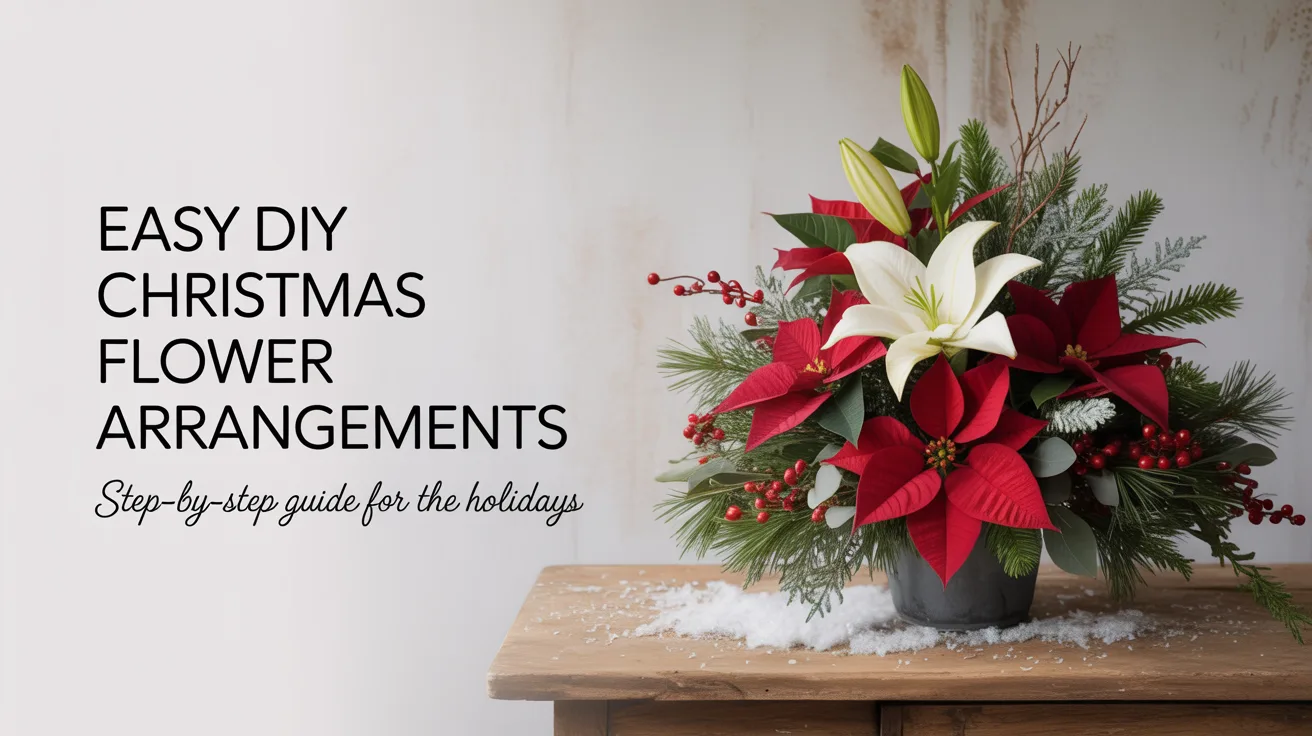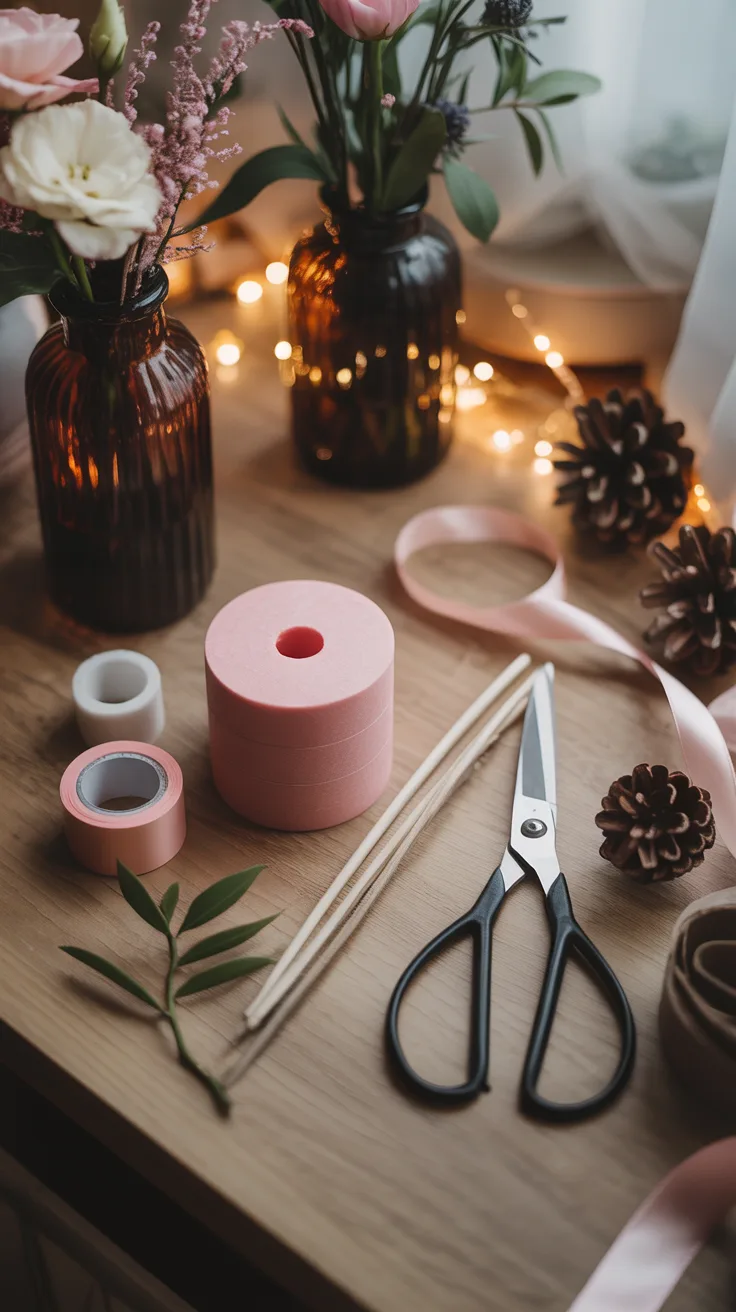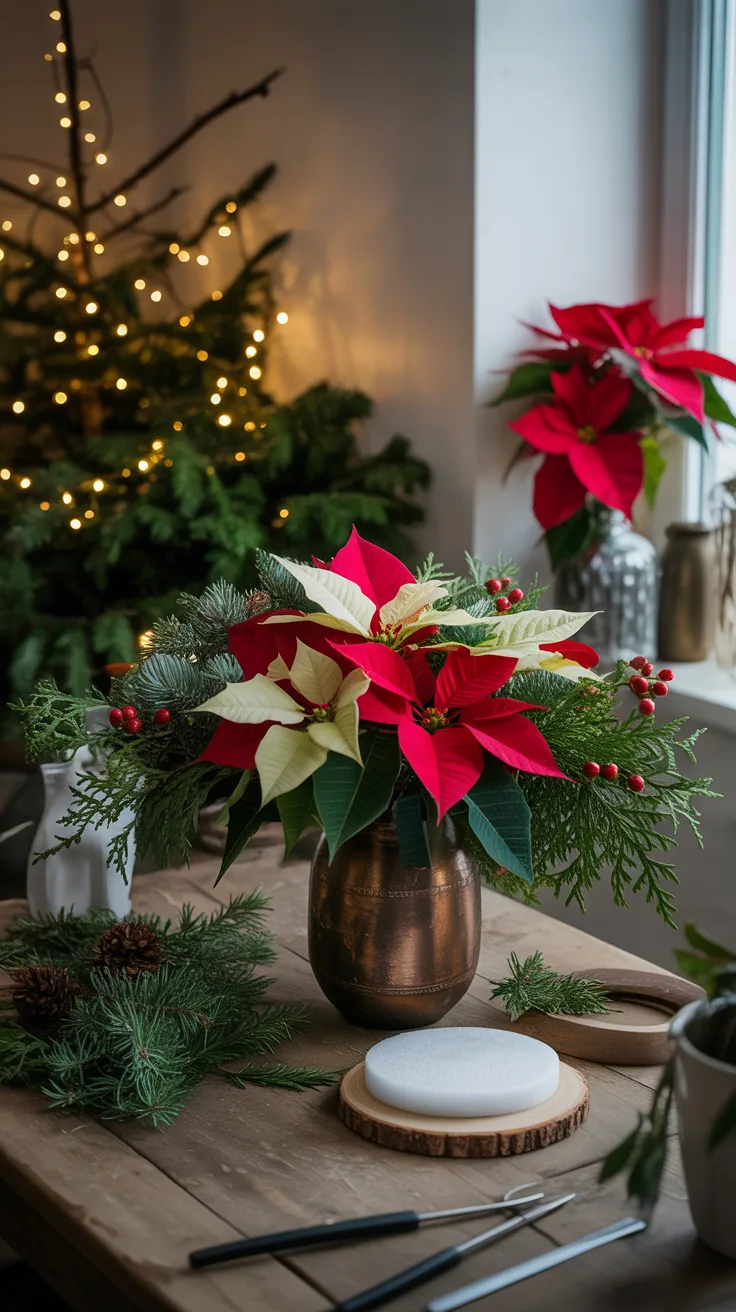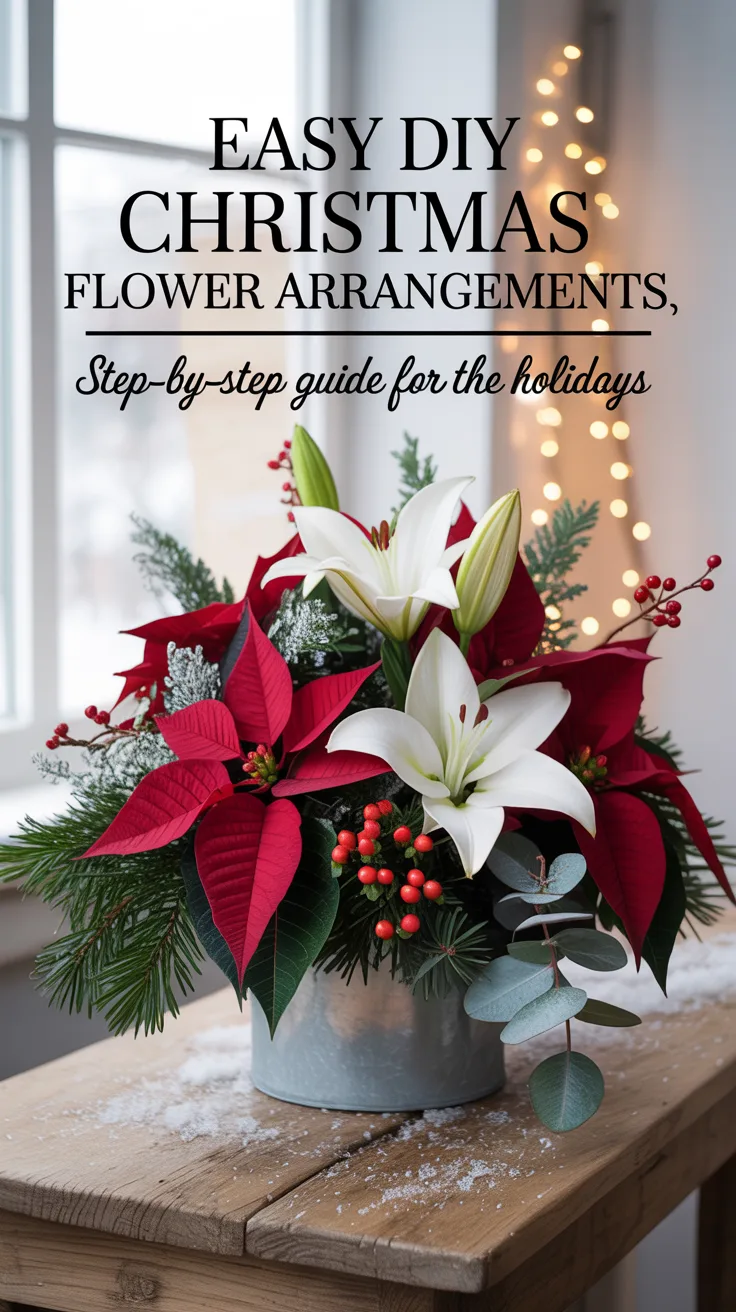
Introduction to DIY Christmas Flower Arrangements
There’s something magical about filling your home with fresh flowers during the holiday season. I’ve been creating my own DIY Christmas flower arrangements for years, and I can tell you it’s one of the most rewarding holiday traditions I’ve developed. Not only does it save money compared to store-bought arrangements, but it also allows me to express my creativity and create something truly unique for my home.
When I first started making my own arrangements, I was intimidated—I’m certainly no professional florist! But over time, I’ve learned that creating beautiful holiday centerpieces is actually quite approachable. Even my first attempts, which were admittedly a bit lopsided, brought joy to my holiday table. With a few simple techniques and the right materials, you can create stunning arrangements that will impress your guests and bring the spirit of the season into your home.
In this guide, I’ll walk you through everything you need to know to create gorgeous Christmas flower arrangements that will become the highlight of your holiday décor.
Choosing the Right Flowers for Your Arrangement

Selecting the perfect blooms is the foundation of any beautiful arrangement. I’ve learned this lesson the hard way after once creating an arrangement with flowers that wilted within hours of my Christmas dinner! Here are the flowers and greens I’ve found work best for holiday arrangements:
- Poinsettias – The quintessential Christmas flower, available in red, white, pink, and even marbled varieties
- Amaryllis – These dramatic, trumpet-shaped blooms make a bold statement
- Red roses – Classic and elegant, they pair beautifully with holiday greenery
- White lilies – Add a touch of sophistication and wonderful fragrance
- Carnations – Long-lasting and available in festive colors
- Holly – The glossy leaves and bright berries scream “Christmas!”
- Pine or fir branches – Provide structure and that wonderful evergreen scent
- Eucalyptus – Adds a silvery-blue contrast to traditional reds and greens
- Hypericum berries – Small red or green berries that add texture and interest
- Mistletoe – Not just for kissing! Small sprigs add charm to arrangements
Pro Tip: I always try to include at least one unexpected element in my arrangements. Last year, I added some dried orange slices and cinnamon sticks, which not only looked beautiful but added a wonderful holiday scent!
When selecting flowers, I consider longevity as well as appearance. Nothing’s worse than creating a beautiful centerpiece that wilts before your guests arrive. Carnations, chrysanthemums, and most evergreens will last throughout the holiday season, while more delicate blooms like lilies might need to be added closer to your event.
Essential Tools and Materials Needed

Before I start arranging, I always make sure I have everything I need within arm’s reach. There’s nothing more frustrating than being elbow-deep in flower stems and realizing you need scissors! Here’s my must-have list for creating Christmas flower arrangements:
- Containers – Vases, bowls, baskets, or even hollowed-out pumpkins or pinecones
- Floral foam – Soaked in water, this helps keep flowers in place and hydrated
- Floral tape – Creates a grid on top of vases to hold stems in place
- Pruning shears or sharp scissors – For clean cuts that help flowers last longer
- Floral wire – Supports delicate stems and attaches decorative elements
- Waterproof liner – If using a basket or non-waterproof container
- Decorative accents – Ribbons, ornaments, pinecones, or fairy lights
- Flower food – Extends the life of your arrangement
- Gloves – Protects hands from thorns and sap
- Apron – Flower arranging can get messy!
Pro Tip: I keep a dedicated “flower arranging box” with all these supplies together. This saves me time hunting for materials and ensures I don’t forget anything important when shopping for supplies.
I learned the importance of proper tools after struggling with dull kitchen scissors on woody stems for years. Investing in a good pair of pruning shears was a game-changer for me—it makes the process so much easier and helps your flowers last longer by creating clean cuts that allow better water absorption.
Step-by-Step Guide to Creating a Christmas Flower Arrangement

Now for the fun part! Let me walk you through creating a beautiful holiday centerpiece, step by step. This is the process I’ve refined over years of trial and error:
- Prepare your container – If using floral foam, soak it completely in water with flower food added. Cut it to fit your container, leaving it slightly higher than the rim. If using a vase without foam, create a grid with floral tape across the top to help position stems.
- Add your base greenery – I start by inserting evergreen branches or holly around the perimeter, creating a foundation and establishing the shape. I aim for a slightly asymmetrical look, which feels more natural than perfect symmetry.
- Create focal points – Place your largest, most dramatic flowers (like poinsettias or amaryllis) at key points in the arrangement. I usually position one slightly off-center as the main focal point, with secondary focal flowers balancing the composition.
- Fill in with secondary flowers – Add roses, carnations, or other medium-sized blooms, distributing them evenly throughout the arrangement.
- Add texture and interest – Incorporate berries, smaller flowers, and interesting foliage to fill gaps and add dimension.
- Include decorative elements – This is where your arrangement becomes truly festive! Add pinecones, cinnamon sticks, small ornaments, or ribbon bows. I once wove a string of battery-operated fairy lights through an arrangement for a dinner party, and it was absolutely magical.
- Finish with delicate elements – Add any delicate items like mistletoe or fine tendrils that might get damaged if added earlier.
- Check from all angles – Walk around your arrangement to ensure it looks balanced from every viewpoint.
Pro Tip: When I’m creating an arrangement for a dining table, I always make sure it’s not too tall to block conversation. A good rule of thumb is to keep centerpieces below eye level when seated.
My first few arrangements were definitely learning experiences. I once created a beautiful centerpiece that was so heavy with wet foam it nearly collapsed my antique table! Now I always use a protective base under my arrangements to prevent water damage.
Pro Tips for Perfecting Your Flower Arrangements
Over the years, I’ve collected some tricks that have taken my Christmas flower arrangements from amateur to impressive. Here are my favorite insider tips:
Work in layers and depths – Professional-looking arrangements have depth. I place some elements deeper in the arrangement and allow others to extend outward, creating a three-dimensional effect that catches the eye.
Follow the rule of thirds – I try to include flowers at three different heights: some low near the container’s rim, some at medium height, and a few reaching higher. This creates visual interest and a more dynamic arrangement.
Consider the viewing angle – If your arrangement will be against a wall, focus on making it attractive from the front and sides. For a centerpiece, ensure it looks good from all angles.
Extend the life of your arrangement – I change the water every few days and remove any wilting flowers promptly. I also keep arrangements away from heat sources and direct sunlight, which can cause flowers to fade quickly.
Pro Tip: I always create my arrangements a day before I need them. This gives the flowers time to open fully and settle into their positions, resulting in a more natural, cohesive look.
One of my most memorable mistakes was using strongly scented lilies in a dining table arrangement. While beautiful, their powerful fragrance completely overwhelmed the food! Now I save highly fragrant flowers for areas away from where food will be served.
FAQs About Christmas Flower Arrangements
What are the best flowers to use for Christmas arrangements?
Traditional Christmas flowers include poinsettias, amaryllis, and red roses, but don’t feel limited! I’ve created beautiful holiday arrangements with white hydrangeas, green chrysanthemums, and even succulents. The key is to incorporate some traditional holiday elements like evergreens, holly, or red berries to give it that Christmas feel.
How can I keep my flower arrangements fresh longer?
I’ve found that the secret to longevity is proper preparation. Always cut stems at an angle under running water, remove any foliage that would sit below the waterline, and use flower food in the water. Change the water every 2-3 days, and keep arrangements away from heat sources, fruit (which releases ethylene gas that speeds aging), and direct sunlight.
Can I use artificial flowers in my Christmas arrangements?
Absolutely! I often mix high-quality silk flowers with real greenery for the best of both worlds. The artificial flowers provide long-lasting structure, while the real greens contribute that wonderful holiday scent. Just be sure to dust artificial arrangements regularly, as they can collect dust over the holiday season.
What are some budget-friendly flower arrangement ideas?
Some of my most beautiful arrangements have been the most economical! I forage for evergreen branches, pinecones, and holly from my yard (or ask friends with appropriate trees if I can clip some branches). Grocery store carnations last forever and come in festive colors. Baby’s breath is inexpensive and creates a beautiful “snowy” effect. And don’t forget to check discount stores for ribbons and decorative elements after Christmas for next year’s arrangements!
How do I choose a color scheme for my arrangement?
I like to coordinate my flower arrangements with my existing holiday décor. Traditional red and green always works, but don’t be afraid to explore other festive combinations like white and gold, blue and silver, or even purple and lime. I find that limiting myself to 2-3 main colors (plus green) creates the most cohesive look. For a sophisticated arrangement, try using different shades of the same color for a monochromatic effect.

